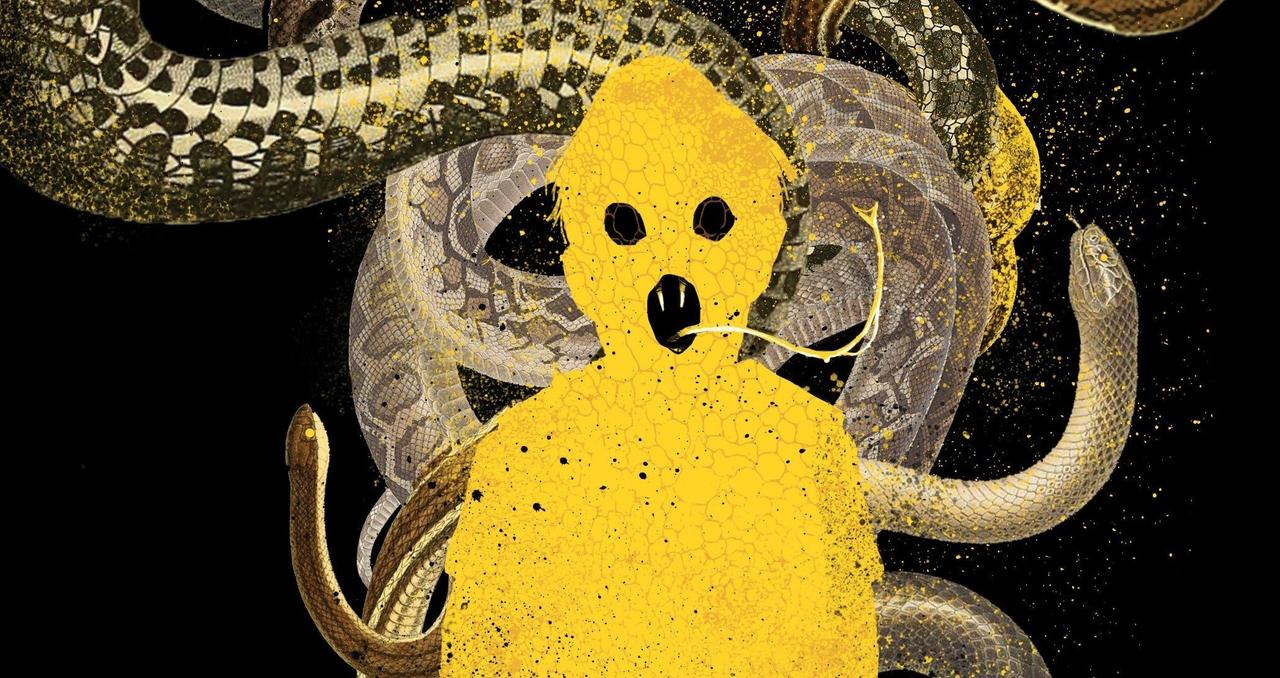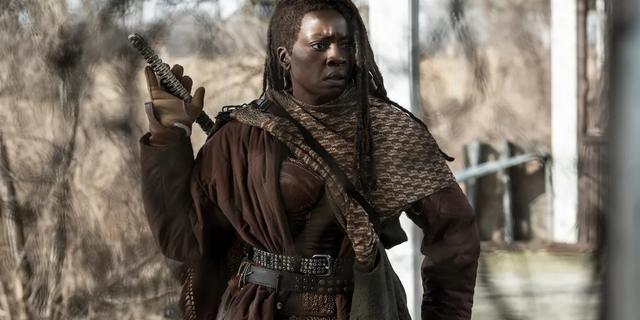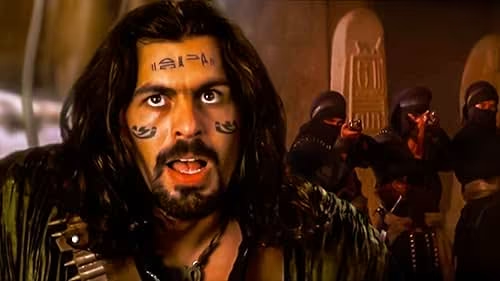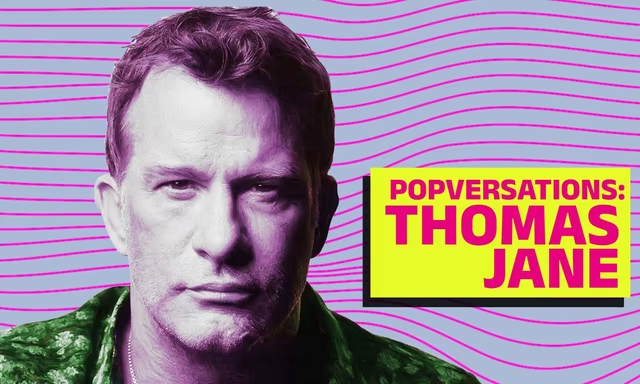If you click on a link and make a purchase we may receive a small commission. Read our editorial policy.
Thai ghost stories come to haunt Sandman mythos in Dead Boy Detectives
Pornsak Pichetshote on Dead Boy Detectives, Sandman, and Thai ghost stories

Content warning: Preview pages in a below gallery feature some gore.
When it comes to writing smash-hit comics, Thai-American writer Pornsak Pichetshote is batting 1.000 and is barely breaking a sweat. Pichetshote’s debut, Infidel, tells the tale of an American-Muslim woman who is haunted by spirits who feed off of xenophobia. He followed that up with another creator-owned series, The Good Asian, which won the 2022 Eisner Award for Best Limited Series. The gritty 1930s noir centers around a self-loathing Chinese detective navigating the nation’s first immigration ban, abusive police, and was released amidst violence against Asian-Americans in the US.
Pichetshote is currently writing Sandman Universe: Dead Boy Detectives, a six-issue mini-series for DC Black Label. Dead Boy Detectives stars Charles Rowland and Edwin Paine, who were murdered as children and now investigate supernatural cases as ghosts. Pichetshote’s tale takes the boys to Los Angeles to investigate a missing Thai-American girl, entering the terrifying world of Thai ghosts.
The Dead Boy Detectives first appeared in Sandman #25 during the 'Season of Mists' storyline. Hot off the Netflix Sandman series, this timely release is aimed to remind readers of a HBO Max Dead Boy Detectives series in production (the investigators made their live-action debut on the third season of Doom Patrol). For Pichetshote, this project is a homecoming, as he began his work in comics as Karen Berger’s junior editor at Vertigo Comics, working on memorable comics like Sandman, Swamp Thing, Daytripper and The Unwritten. Leading up to the release of Dead Boy Detectives, Popverse had a chance to chat with Pornsak Pichetshote about working on Sandman comics, diving into the world of Dead Boy Detectives, and the terrifying world of Thai ghosts.

Popverse: Pornsak, did you happen to work on Sandman as they were being made?
Pornsak Pichetshote: Yes! I worked on the Sandman: Dream Hunters comics, which was being adapted by P. Craig Russell. The original was a prose novel with illustrations by Yoshitaka Amano.
That was around the time when Sandman comics were reaching peak popularity and Vertigo was a thriving imprint. What were those calls like with Neil Gaiman?
Neil would weigh in on the project from time to time. He’s such a natural storyteller, as everybody knows, but he’s such a natural conversationalist. You get him on the phone, and you find yourself just talking to him. This is Neil Gaiman, there’s no way he cares about the s*** I have going on in my life, why would he? I barely care about the s*** going on in my life. But he’s such a good storyteller, that you feel open to talk about that sort of stuff with him.
When a new Sandman project was greenlit, was it all hands on deck because it was this flagship property or was it more organic?
It was always organic. It happens in stages, where you’re most excited when it’s the least definite. 'Neil wants to do a new Sandman, Holy s***!' Then it becomes neurosis. ‘Am I the one that’s going to f*** this up?' [laughs] Over time it becomes surreal, and eventually it always leads into pride at the end.
The live-action Sandman Netflix series is a hit, the gears are in motion for a Dead Boy Detectives series on HBO Max, and DC Black Label went somewhat 'in-house' with you and welcomed you back as one of those chosen creators to play in this sandbox.
I’m in a real nostalgic place right now because of an Instagram chain that (former Vertigo editor) Will Dennis posted from his New York office from that era. [You could see books that people worked on at their desks, covers of the different comics being chosen, and desk decor including action figures and statues] I don’t know if you’ve been to the DC offices-- but because of Covid, no one has offices anymore, just desks with nothing on them. But back then, there was all this history, there was something magical there, that you’re part of something that’s bigger than you.
Most people have a connection with Sandman through reading it, but you’re one of the few who have seen how it was created. When working on a Sandman spinoff, are you collaborating with Neil or is it based off the pitch?
It’s more based on the pitch. Neil gave it a big email blessing, which I want to frame. That meant the world to me. This world means a lot to me, because it is such a part of my past. At the same time, the trick with all this stuff is that if you’re too referential to the past, you can’t do it justice.
Was there anything in previous Dead Boy Detectives stories that you felt you needed in your story, or was it all background knowledge to start anew?
All of that stuff rattled around in my head. Neil does a lot of things really well, but I think what he does head and shoulders above any other comic creator is that his voices are so distinct and so versatile. For me, it was cherry-picking the best parts of the lore. But we all have the same job, which is to make sure the things that Neil created shines and that we protect what he created.
After that you have the works of Ed Brubaker, Jill Thompson, Toby Litt, and Mark Buckingham. Each of them added different tools to use to honor what Neil has done. I try to pick out the best of that. You can’t just do what’s been done before. I also have to do something new, otherwise it’s not Sandman Universe. That’s the challenge because in comics, nobody likes change too much because then it feels like a betrayal. But for Sandman specifically, you have to change, because that’s what Sandman is about.

When I read what this latest Dead Boy Detectives was about, I thought of Mike Mignola and how he likes to do his interpretation of international folklore for the Mignola-verse. Was DBD the opportunity for you to tap into and share Thai culture similarly?
Absolutely, 100 percent! What you said about Hellboy is Neil’s approach on Sandman. Neil’s whole tenet is that everybody dreams, everything dreams. It doesn’t matter if it’s gods or Japanese spirits or superheroes. It’s this mythology that Morpheus touches all of them. My thesis for my Dead Boy Detectives is that it’s a Sandman take on Stranger Things. We have Edwin and Charles, and they come crashing into the world of Thai horror and Thai ghosts and learn what that is.
There’s a bunch of new characters that we’re introducing here. I would love those characters, those Thai ghosts to be a part of the Sandman universe if James wants to use them in Nightmare Country, if Neil ever comes back, or someone else down the line wants to use them. We now live in a world as you said, where they’re shooting a Dead Boy Detectives show, there’s a Sandman Season 2–these characters are up for grabs for all that sort of stuff, little pieces of Thai culture can live beyond this story.
Sandman had some really twisted stuff. But Neil would say, ‘Oh no, that’s an old Greek story about a-this-and-a-that.’ In the first issue of Dead Boy Detectives we show a Krasue, a normal woman in the day, but at night her head pops off, her entrails hanging behind her, floating around killing people. That’s such a gruesome idea. I could never come up with that, but it’s part of old Thai culture.
What was it about Thai ghost stories that made you feel like they deserved a bigger stage?
They’re so f***ed up! [Laughs loudly] The average ghost stories are people dying and they come back. Thai ghost stories are about people who hang out with you, then night falls and their heads completely rip off and as their guts are dangling behind them, will try to kill you. [laughs] It’s so screwed up in the best sense.
The legacy of these stories are passed down orally. What made the biggest impression on you, was it your family’s stories or did you read or see something in Thai pop culture?
When I told my mom I was writing this, she just started laughing in the most obnoxious way. She would just say, 'You haven’t even seen a Thai ghost, why would they ask you to write this?'
I spent five years growing up in a Thai high school, so I would hear a lot of those stories, and it was normalized. But I was the only one who had never seen a Thai ghost. You see, everyone has a ghost story. Everyone has seen a ghost. I have a lot of friends who have seen headless ghosts or ghosts holding their heads. As a result, there is a greatest hits list from all the stories I’ve heard; these are the ones that have staying power. Then you do some research and go, oh wow, never heard about that. That’s crazy!

Here’s the thing. You can’t argue with a witch doctor or a ghost doctor. They tell you, 'Your aura is so dark, you don’t do well at school, right? Or maybe when you read it doesn’t sink in?' No, my grades are fine. 'Oh, well no one really likes you, right?' No. I have friends. 'Well… something is coming.' I guess I can’t win this conversation. I guess I need to get cleansed.
In Dead Boy Detectives #1, this is a very specific angle you’re taking because it takes place not in Thailand, but in Los Angeles, where the second-largest concentration of Thai people live.
I’m sure you feel like this as a Filipino; we get lumped into Asian-American category, which is good but the specifics of that are lost. People are aware of us mostly through our food more than anything else. Forget about being Thai or Filipino, you then have an additional subset of being Thai-American and being Filipino-American. That falls under the bracket of being Asian-American, but it’s also a very specific thing, it’s other perspectives as well. I use the book to talk about all that in the context of these boys doing a detective mystery as horrors are all around them.
What fascinated you about Charles and Edwin?
I remember when I read Children’s Crusade #1, I thought to myself, this might be my favorite Neil Gaiman comic. Over time and multiple reads, I began to realize it was because of Edwin and Charles, because of their youthful perspective. It’s hopeful, it’s innocent, but it’s contrasted against some very dark stuff. They’re murdered children, murdered by other children. That’s super dark and yet, they have hope and innocence to them. There’s something about that contrast, hope and innocence in the midst of all this gruesome darkness.
I can go very hard with the horror in this book and balance it with home, with innocence and idealism amidst the horror.
There are hundreds of Thai ghosts, and it’d be tempting to do a ghost-of-the-week, serialization. How did you reduce it for six issues? Did the selection process just come down to the ghosts that messed with you the most?
To me, it’s how you make any character driven horror story. You want the stuff that f***s you up, but at the end of the day, this is a story about Edwin and Charles. You won’t know why, but for the first time in the 30 years together, there’s a rift in their friendship they are not talking about but are aware is there. As we get into the book, we’ll get into this quiet rift between friends and what that means.
Back in the day, the covers set Vertigo apart from the rest of the rack, whether it was Dave McKean on Sandman or Glenn Fabry on Preacher. The covers for Dead Boy Detectives are striking. Given the number of Thai ghosts there are and how many are featured in this story, are these covers supposed to be a representation of each ghost?

Yes! Variants are part of the language of comics retail. I give all credit to my editor Andrea Shea, who is amazing to work with, and she had this vision of how you could curate that. The main covers are more story-centric by Nimit Malavia, who was the cover artist on Fables after James Jean. So that continues that tradition of Vertigo back when I was there.
Then we have this new voice, Alex Eckman-Lawn, who is doing a variant, for each issue, his interpretation of a Thai ghost. You’ve never seen any Western artist do that before. Whenever I’ve seen an image of a Thai ghost it’s by a Thai artist with either Thai or Thai-Indonesian influences. To have someone come at it with a completely different historical perspective and different influences is exciting.
There’s really just one kind of [Western] ghost, and we argue about what a ghost can do and the rules. In Thailand because it’s such an exceptional folklore, there are hundreds of types of Thai ghosts, and so each had different abilities, different quirks, some had reasons why they’re that way, others have no reasons they are like that just because. The idea that you could go to a comic book store and see six different Thai ghosts done by one Western artist-- like forget comic books, you don’t see that in a museum anywhere.
In collaborating with Jeff Stokely, what did he flip out at when he saw the scripts?
[Laughs] Jeff never complains, I think it’s less of 'You want me to draw what?' as much as it is glee. He’s been wanting to draw horror for a long time. If you’re familiar with his stuff, it can veer towards cartoony, with a warped edge to it. We’re asking him to go hard [with the horror]. I’m so grateful we have someone like Jeff who just wants to lean into the gore. He’s also so good with acting, and with the innocence of children. He has the perfect range for this–an absolute dream to work with.
Preview Pages from Dead Boy DetectivesWhat’s it feel like to play in someone else’s sandbox? What do you hope readers get out of this?
I hope what every storyteller hopes for, that it’s entertaining, it’s scary, and moving. I want that stuff to work. Paul Levitz used to say if you play with a toy in the sandbox, make sure you put another one in. I have an opportunity to leave these other toys in the box for others to use, so it doesn’t just have to be me. Hopefully they become a door for more people to see themselves in these stories and talk through these stories, and for these stories to talk about other things.
What I think is cool about this project is for me, it’s a very personal story and talking about ideas that are personal to me, that if I had a creator-owned book, I’d do it in a creator-owned book. But I had the opportunity to use this mythology that Sandman put together to help tell the story.
Did Infidel and The Good Asian open up more opportunities for you to lean into your Asian-American culture? Is this going to become your jam?
[Laughs] In theory I should be thinking more about stuff you just said, but in reality I rarely did. What I actually had on my mind was 'This was a great opportunity.' I’ve been wanting to talk about my Thai aspects of my life, and to incorporate that perspective into Sandman. So probably at some point I should’ve asked, hmm, am I doing too much Asian stuff? Am I getting pigeonholed?
Honestly though, it was Sandman, and it encapsulates everything but it hasn’t touched on this yet and I’ve been dying to talk about it somewhere, so why not here? It feels like it serves me and serves Sandman. It just felt so natural, that until you asked me about it, I’ve never even considered it [laughs].
What’s it like hearing from the Asian-American community who has read your work?There’s a power in knowing a signal has reached its destination, that I wasn’t expecting. To hear that people thought that they needed it, or thought they’d never seen it and know that they’ve seen it, to experience something on a page, when they’re used to not experiencing it, in real time… I feel that it’s important. Especially when people say, 'I’ve never thought I’d see something like this,' and knowing what’s not being said, that meant a lot to me. On one hand, it shouldn’t be a surprise because that’s why I did it. On the other hand, hearing people say that they needed to see it, I find it very moving.
Sandman Universe: Dead Boy Detectives #1 comes out December 27 and is written by Pornsak Pichetshote, with Jeff Stokely art, colors by Miquel Muerto, and letters by Hassan Otsmane-Elhaou. Regular covers will be by Nimit Malavia, with variants by Alex Eckman-Lawn, Tyler Crook, Filipe Andrade (1:25) and Yoshitake Amano (1:50).
DC, Marvel, and more: The best superhero comic collections to give to loved ones for this holiday season
Follow Popverse for upcoming event coverage and news
Find out how we conduct our review by reading our review policy
Let Popverse be your tour guide through the wilderness of pop culture
Sign in and let us help you find your new favorite thing.















Comments
Want to join the discussion? Please activate your account first.
Visit Reedpop ID if you need to resend the confirmation email.